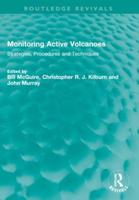Publisher's Synopsis
The Science of Earthquakes: Why They Happen and How They're Measured is a compelling, accessible guide to one of nature's most powerful and awe-inspiring forces. Whether you're a curious reader, student, or lifelong science enthusiast, this book breaks down the mysteries behind seismic activity in clear, engaging language-without oversimplifying the fascinating complexity of how our planet moves.
From the shifting tectonic plates beneath our feet to the sophisticated instruments scientists use to track tremors around the globe, this book takes you on a journey through the core science of earthquakes. Beginning with the structure of the Earth and the dynamics of plate tectonics, readers are introduced to the fundamental causes of earthquakes and how they relate to the Earth's evolving geology.
You'll learn how faults form, why some regions are more seismically active than others, and what actually happens beneath the surface when an earthquake occurs. Through real-world examples and historical case studies-from the devastating San Francisco quake of 1906 to the catastrophic events in Haiti and Japan-this book brings the science to life, showing how seismic waves ripple through cities and landscapes with extraordinary power.
The book also dives into the technology behind earthquake measurement. Discover how seismographs work, what the Richter and Moment Magnitude scales really mean, and why intensity and magnitude are not the same thing. You'll gain a deeper understanding of the tools seismologists use to measure, analyse, and even attempt to predict earthquakes.
In addition to the science, The Science of Earthquakes explores how society prepares for and responds to seismic disasters. What makes a building earthquake-resistant? How do early warning systems save lives? And why is public education one of the most important tools we have in the face of natural disasters?
Finally, the book looks ahead, examining the latest research and innovations shaping the future of earthquake science-from artificial intelligence to satellite monitoring and international seismic networks. It acknowledges what we still don't know while celebrating how far we've come in understanding one of the planet's most dramatic natural processes.
This is more than just a scientific explanation-it's a call to curiosity, preparedness, and respect for the forces that shape our world.









